Positions for hand activities
There are a variety of positions that can make learning fun and help develop the stability we need for everyday activities. One of the best positions to work in when carrying out hand activities is to be seated at a table. The checklist below outlines the optimal seated position for postural stability. Correct positioning can also enhance concentration and attention to task.
Checklist of correct seating

- Chair in close to the desk.
- Bottom to the back of the chair.
- Feet flat on the floor.
- Back straight.
- Elbows resting comfortably on the desk.
- Clear desk of items not being used.
The following positions may also be useful but this will be dependent on the skills of the individual child.
Standing
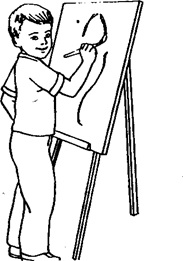
- Use a chalkboard or easel or tape some paper to the wall.
- Encourages a good wrist position for using tools to scribble and draw.
- Enables the child to make large movements when mark making and drawing, emphasizing the direction of lines.
Lying on your tummy
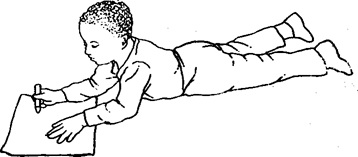
- In this position the child’s whole body, elbows, forearms and wrists are supported. This position provides a useful base of support from which to perform new, challenging fine motor tasks.
Kneeling
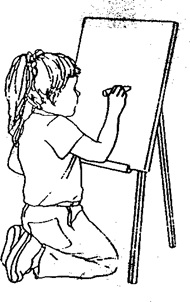
- This position can encourage the development of postural stability and balance.
Hands and knees
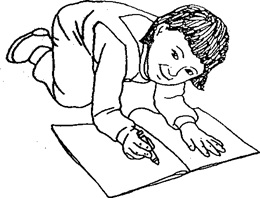
- This is a useful position for doing interactive joint projects or colouring in.
- Putting weight through the arms assists in developing shoulder stability and strength, needed for control in drawing and writing.
Half Kneeling
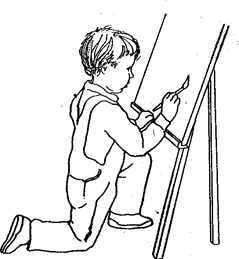
- This is one of the most challenging positions. Half kneeling at a table is easier than without support.
- This can encourage the development of postural stability and balance.
